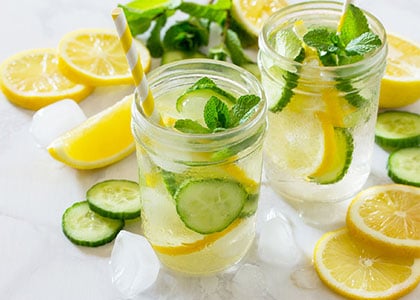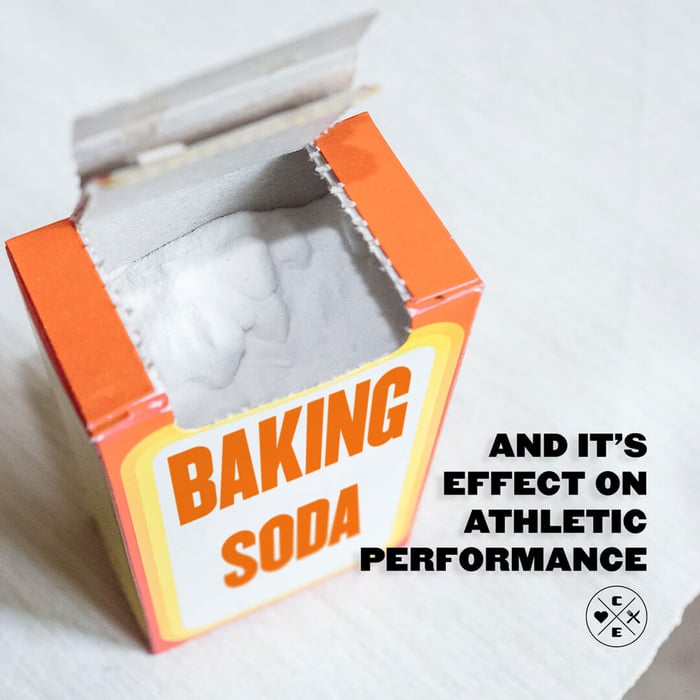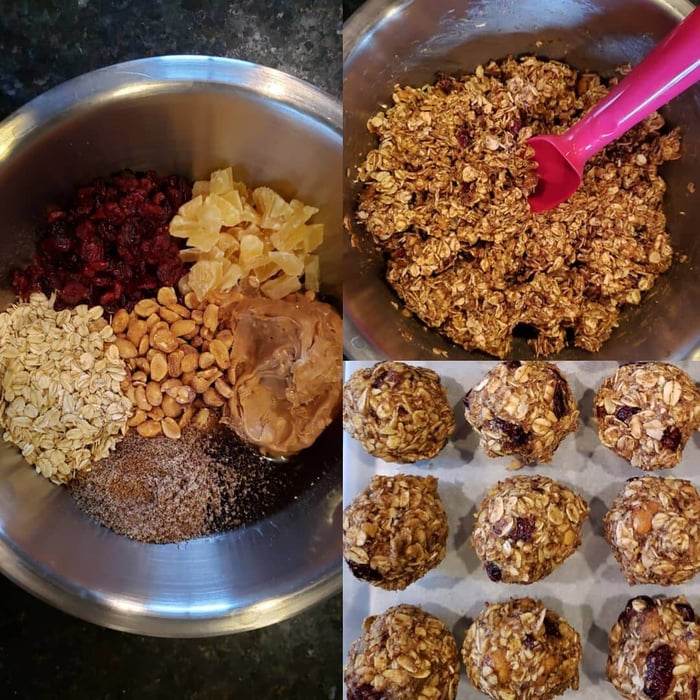Last updated: September 12, 2025
The Best Water Supplements to Make Staying Hydrated Delicious (Electrolytes, 2025)
Quick answer: For most people, plain water covers day-to-day needs. When you want better flavor—or you’re training, sweating in heat, or doing long sessions—electrolyte add-ins (powders, tablets, or drops) can help replace sodium and other minerals and make hydration easier to stick with. Prefer a simple flavor boost? Try lemon water. Choose low-sugar options for everyday and save carb-containing mixes for longer, harder workouts.
What Counts as a “Water Supplement” in 2025?
- Electrolyte powders: single-serve sticks or tubs; mix with 12–20 oz water.
- Effervescent tablets: drop-in tabs that lightly carbonate and flavor water.
- Electrolyte drops: concentrated minerals; great when you want no sweetness.
- Flavor-only enhancers: taste boost but little/no electrolytes—fine for daily variety, not for heavy sweat. See how to make lemon water for a clean, low-effort option.
- Ready-to-drink bottles: convenient but heavier and pricier; check labels for sugar.
Do You Need Electrolytes—or Just Water?
- Everyday/desk days: water is usually enough; add light flavor if it helps you drink more.
- Gym or sports < 60 minutes: water or a low-sodium mix is fine—especially if the room is cool.
- Hot/sweaty or > 60 minutes: an electrolyte mix with meaningful sodium (see cheat sheet below) helps replace sweat losses and maintain performance.
- Low-carb/keto days: some people feel better with a little extra sodium and potassium—use a balanced, low- or zero-carb electrolyte mix.
- Training fasted? Review our guide to exercising on an empty stomach to match fuel and hydration to your session.
Electrolyte Label Cheat Sheet (Per 16–20 oz)
Ranges are typical targets; adjust for sweat rate, climate, and personal tolerance.
| Use Case | Sodium | Potassium | Magnesium | Carbs/Sugar | Notes |
|---|---|---|---|---|---|
| Everyday sipping | 0–150 mg | 50–200 mg | 0–50 mg | 0 g | Flavor helps you drink more; go zero- or very low-sugar. |
| Gym/HIIT ≤ 60 min | 150–300 mg | 100–200 mg | 0–50 mg | 0–10 g | Useful in warm rooms or if you sweat a lot. |
| Endurance/heat > 60 min | 300–600 mg | 200–300 mg | 30–75 mg | 0–30 g | Higher sodium and optional carbs support long sessions; adjust hourly. |
| Low-carb/keto days | 200–500 mg | 100–200 mg | 0–50 mg | 0 g | Zero-carb electrolyte mixes can reduce “flat” or lightheaded feelings. |
Powders vs Tablets vs Drops
| Format | Pros | Watch-outs | Best For |
|---|---|---|---|
| Powders | Precise dosing; wide flavor range; travel sticks | Some are very sweet; check sugar and sodium | Daily flavor, gym sessions, long runs/rides |
| Tablets | No mess; mild fizz; easy to keep in a bag | Fixed serving size; sodium varies | Office, travel, spin classes |
| Drops | Zero sweeteners; you control strength | Mineral taste if you over-dose | Hot climates, low-carb days, adding to any beverage |
How to Choose in 2025 (Quick Filters)
- Match sodium to sweat: if your hat/sleeves get salty or you cramp often, choose mixes on the higher end of sodium.
- Pick your sweetness: zero-sugar (stevia/sucralose) for everyday; modest sugar (10–30 g/hour) can help long, hard workouts.
- Balanced minerals: a little potassium (100–300 mg) and magnesium (up to ~75 mg) is plenty for most; avoid mega-doses.
- Third-party tested: when possible, look for NSF/Informed Choice or similar for sport products.
- Want a full comparison of drink types? See our guide: Juicing vs Blending.
DIY Electrolyte Water (2 Ways)
Everyday Zero-Sugar
- 16–20 oz cold water
- Pinch of sea salt (a small pinch ≈ 100–200 mg sodium)
- Lemon or lime wedge
Stir and sip. Add electrolyte drops if you want a cleaner taste without citrus pulp—see the drops section above.
Long/Hot-Day Mix
- 16–20 oz water
- ¼ tsp salt (≈ 500–600 mg sodium)
- 1–2 tsp sugar or honey (optional, for longer workouts)
- Squeeze of citrus
Shake well. Adjust salt up or down based on taste and sweat rate.
Common Mistakes & Easy Fixes
- Only fruit flavor, no electrolytes: fine for taste, but won’t replace sweat losses—use true electrolyte mixes in heat or long sessions.
- Stacking products: using multiple mixes can overshoot sodium or stimulants—stick to one at a time and read labels.
- Too sweet: cut with extra water or choose a zero-sugar version; sweetness fatigue reduces intake.
- Never drinking plain water: alternate flavored/electrolyte bottles with plain water over the day.
Related Reading
- Juicing vs Blending: Which Is Better for Weight Loss?
- How to Make Lemon Water for Weight Loss
- Should I Exercise on an Empty Stomach?
- Top 10 Health Tips (That Actually Fit a Busy Life)
Popular Electrolyte Brands (External)
Not sponsored. For information only. External links open in a new tab.
- Liquid I.V. — widely available electrolyte drink powders.
- LMNT — zero-sugar, higher-sodium electrolyte powders.
- Nuun — effervescent electrolyte tablets for drop-in convenience.
- Skratch Labs — endurance-focused drink mixes.
- Ultima Replenisher — zero-sugar electrolyte powders.
- SOS Hydration — low-sugar hydration powders and sticks.
- Hydrant — flavored hydration mixes with simple ingredients.
- Pedialyte — ready-to-drink and powder options.
- Propel — zero-sugar flavored electrolyte waters.
- Trace Minerals — electrolyte mineral drops (unflavored).
FAQs
Are electrolyte powders good for weight loss?
They don’t directly cause fat loss, but they can make drinking enough fluids easier—especially if you prefer flavored water. Choose low- or zero-sugar options for everyday use.
How much sodium should be in an electrolyte drink?
For everyday sipping, 0–150 mg per 16–20 oz is fine. For long/hot workouts, look for roughly 300–600 mg per bottle and adjust to sweat rate.
Do I need carbs in my electrolyte drink?
Not for short or easy sessions. For endurance or very hard training, modest carbs (10–30 g per hour) can improve performance and feel.
Are electrolyte drops safe every day?
For most healthy adults, small daily amounts are fine. If you have blood-pressure, kidney, or heart conditions—or take medications that affect fluids/electrolytes—talk to your clinician.
What about artificial sweeteners?
Many zero-sugar mixes use stevia or sucralose. If you’re sensitive to taste or stomach upset, try different brands or use electrolyte drops with citrus and no sweeteners.
Disclaimer: This article is for general information only and isn’t medical advice. Adjust electrolytes to your needs and follow your clinician’s guidance if you have medical conditions.




